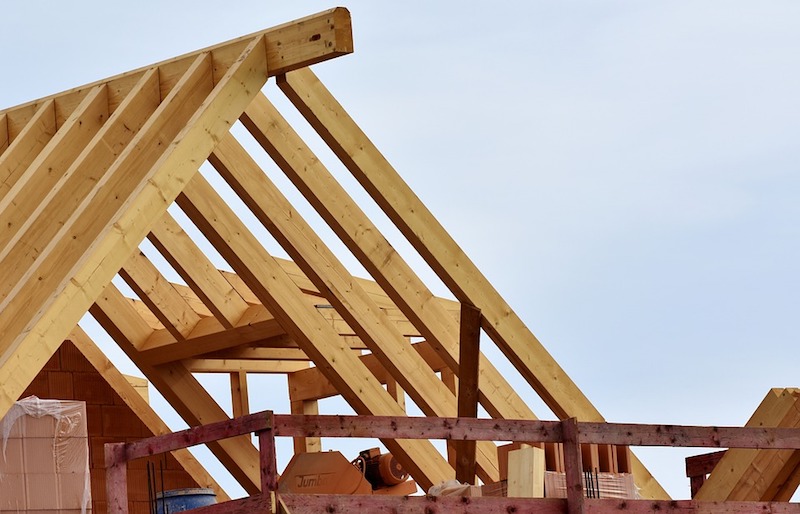Thirty-eight states and the District of Columbia added construction jobs between April 2017 and April 2018, while 29 states added construction jobs between March and April, according to an analysis by the Associated General Contractors of America of Labor Department data released today. Association officials said the employment growth likely would have been higher if firms could find more qualified workers to hire.
"Firms in many parts of the country are working to keep pace with growing demand for construction services," said chief economist Ken Simonson. "Many of those firms are having a hard time finding and hiring enough qualified workers as the pool of available workers remains very tight."
California added the most construction jobs (59,500 jobs, 7.4%) during the past year. Other states adding a large number of new construction jobs for the past 12 months include Texas (40,600 jobs, 5.7%); Florida (34,900 jobs, 7.0%); Georgia (13,900 jobs, 7.6%) and Arizona (11,700 jobs, 8.2%). West Virginia (11.6%, 3,500 jobs) added the highest percentage of new construction jobs during the past year, followed by Nevada (9.8 percent, 8,200 jobs); Arizona; Utah (8.1%, 7,700 jobs) and Idaho (7.9%, 3,500 jobs).
Eleven states shed construction jobs between April 2017 and April 2018 while construction employment was unchanged in Montana. North Dakota lost the highest total and percentage of construction jobs (-4,900 jobs, -17.0%), followed by Iowa (-2,500 jobs, -3.2%); Missouri (-1,500 jobs, -1.2%); South Carolina (-1,400 jobs, -1.4%) and Nebraska (-1,100 jobs, -2.1%). In addition to North Dakota, other states that lost a high percentage of construction jobs for the month included South Dakota (-3.3%, -800 jobs); Iowa; Nebraska and Hawaii (-1.9%, -700 jobs).
Twenty-nine states added construction jobs between March and April. California added the most (10,000 jobs, 1.2%), followed by Texas (4,100 jobs, 0.6%); Louisiana (2,200 jobs, 1.5%); Georgia (2,100 jobs, 1.1%) and Washington (2,100 jobs, 1.0%). Louisiana added the highest percentage of construction jobs for the month, followed by Kentucky (1.4%, 1,100 jobs); New Hampshire (1.4%, 400 jobs); Alaska (1.3%, 200 jobs) and Vermont (1.3%, 200 jobs). Employment set an all-time high in Texas.
Nineteen states lost construction jobs from March to April, while construction employment was unchanged in Mississippi, Montana and the District of Columbia. Indiana lost the most construction jobs for the month (-2,300 jobs, -1.6%), followed by Wisconsin (-2,000 jobs, -1.6%); South Carolina (-1,300 jobs, -1.3%); Massachusetts (-1,300 jobs, -0.8%) and Michigan (-1,100 jobs, -0.6%). North Dakota lost the highest percentage of construction jobs (-2.8%, -700 jobs), followed by Delaware (-1.7%, -400 jobs); Wisconsin; Indiana; South Carolina and South Dakota (-1.3%, -300 jobs).
Association officials said strong demand, particularly from the private-sector, was prompting firms in most states to add staff. But they cautioned that relatively few young workers appear to be entering the construction industry. They said the strong economy was increasing competition for most workers and construction recruiting is hampered by the fact relatively few schools offer instruction in construction skills or counsel students to consider high-paying construction careers.
"The collective cultural fixation on urging every student to go to college and seek office jobs means relatively few young adults are ever encouraged to consider careers in construction," said Stephen E. Sandherr, the association's chief executive officer. View the state employment data by rank, state, and peak. View the state employment map.
Related Stories
Market Data | Oct 31, 2016
Nonresidential fixed investment expands again during solid third quarter
The acceleration in real GDP growth was driven by a combination of factors, including an upturn in exports, a smaller decrease in state and local government spending and an upturn in federal government spending, says ABC Chief Economist Anirban Basu.
Market Data | Oct 28, 2016
U.S. construction solid and stable in Q3 of 2016; Presidential election seen as influence on industry for 2017
Rider Levett Bucknall’s Third Quarter 2016 USA Construction Cost Report puts the complete spectrum of construction sectors and markets in perspective as it assesses the current state of the industry.
Industry Research | Oct 25, 2016
New HOK/CoreNet Global report explores impact of coworking on corporate real rstate
“Although coworking space makes up less than one percent of the world’s office space, it represents an important workforce trend and highlights the strong desire of today’s employees to have workplace choices, community and flexibility,” says Kay Sargent, Director of WorkPlace at HOK.
Market Data | Oct 24, 2016
New construction starts in 2017 to increase 5% to $713 billion
Dodge Outlook Report predicts moderate growth for most project types – single family housing, commercial and institutional building, and public works, while multifamily housing levels off and electric utilities/gas plants decline.
High-rise Construction | Oct 21, 2016
The world’s 100 tallest buildings: Which architects have designed the most?
Two firms stand well above the others when it comes to the number of tall buildings they have designed.
Market Data | Oct 19, 2016
Architecture Billings Index slips consecutive months for first time since 2012
“This recent backslide should act as a warning signal,” said AIA Chief Economist, Kermit Baker.
Market Data | Oct 11, 2016
Building design revenue topped $28 billion in 2015
Growing profitability at architecture firms has led to reinvestment and expansion
Market Data | Oct 4, 2016
Nonresidential spending slips in August
Public sector spending is declining faster than the private sector.
Industry Research | Oct 3, 2016
Structure Tone survey shows cost is still a major barrier to building green
Climate change, resilience and wellness are also growing concerns.
Industry Research | Sep 27, 2016
Sterling Risk Sentiment Index indicates risk exposure perception remains stable in construction industry
Nearly half (45%) of those polled say election year uncertainty has a negative effect on risk perception in the construction market.

















